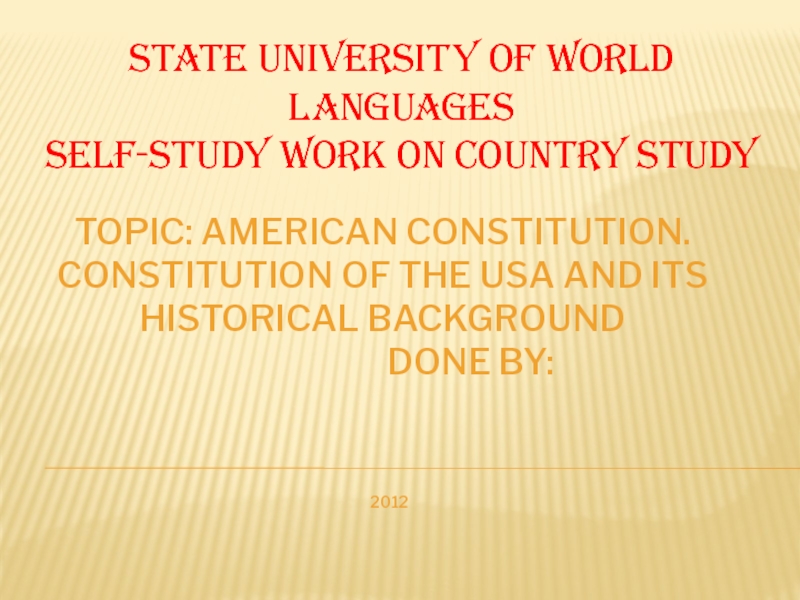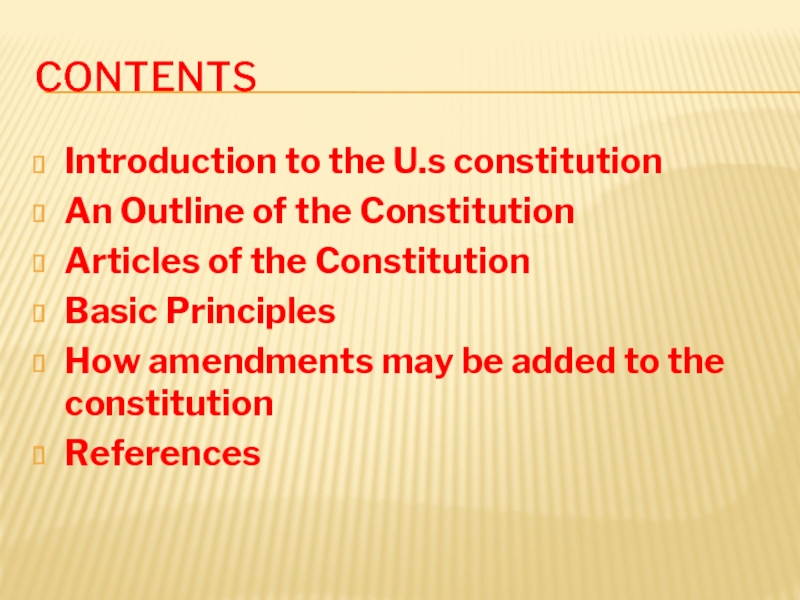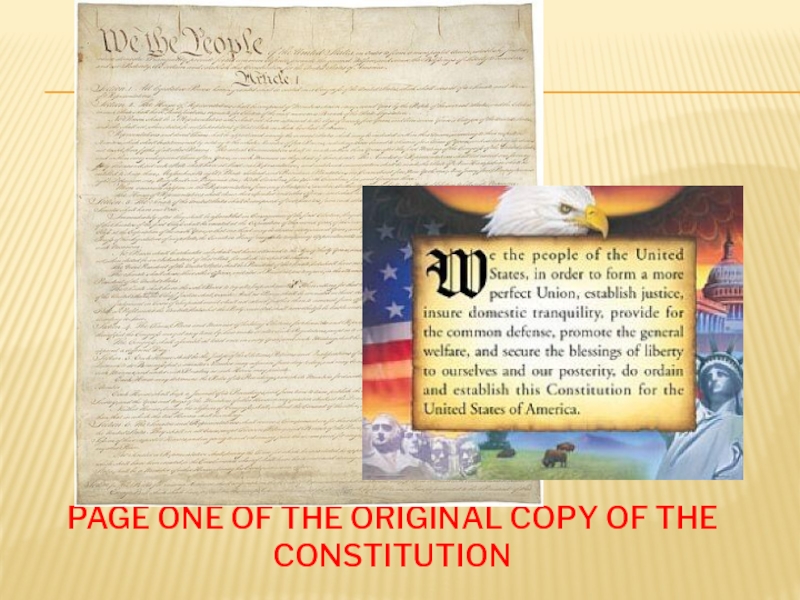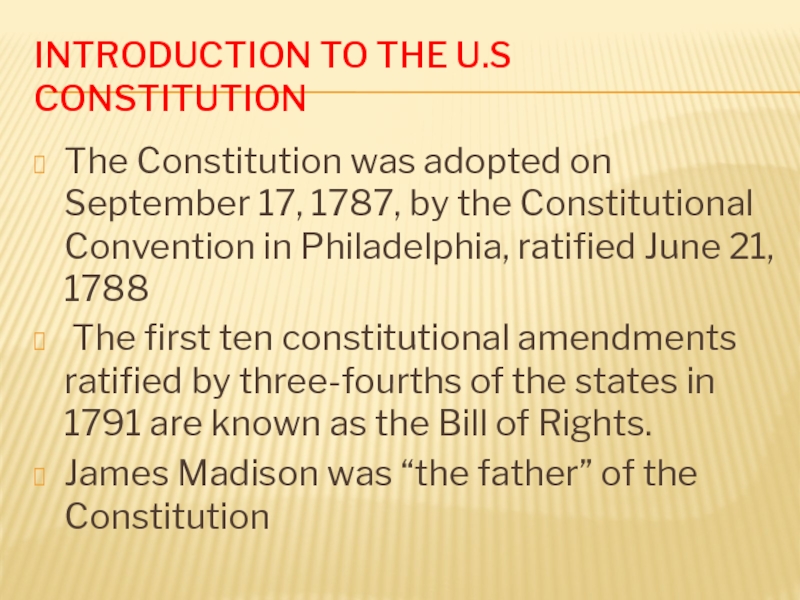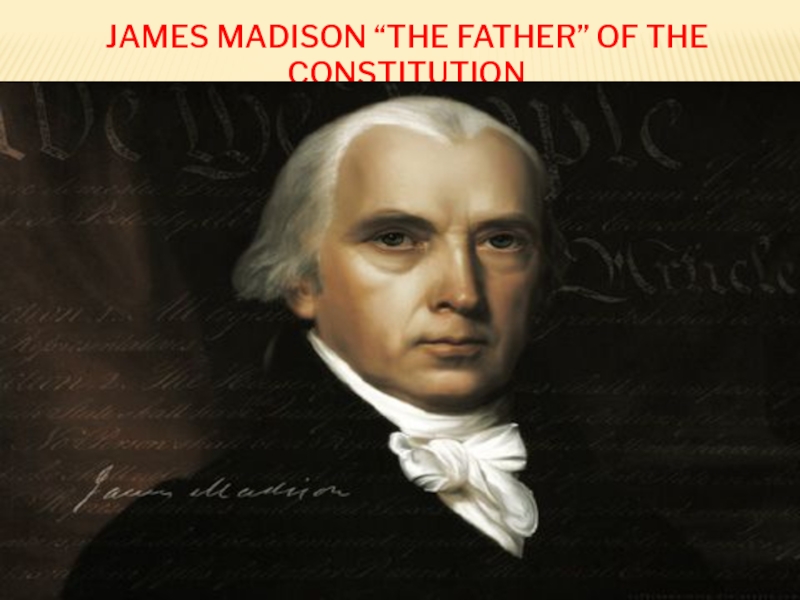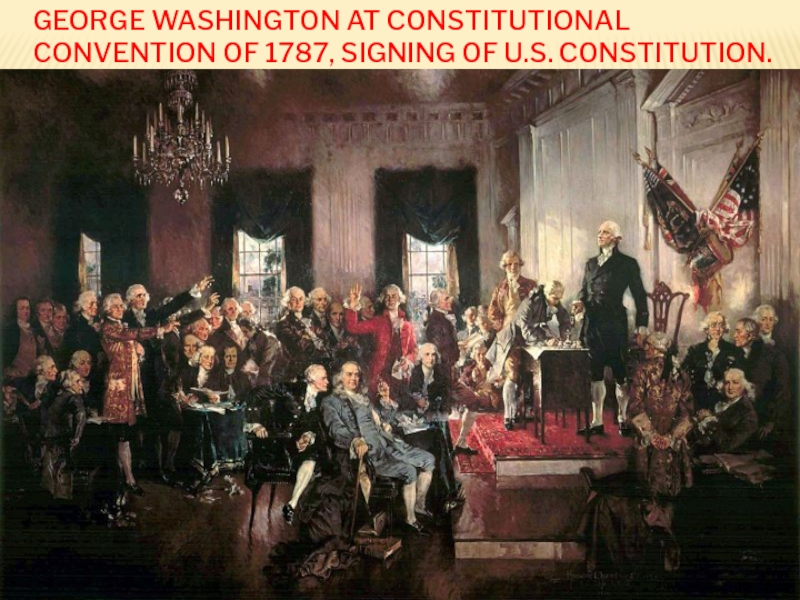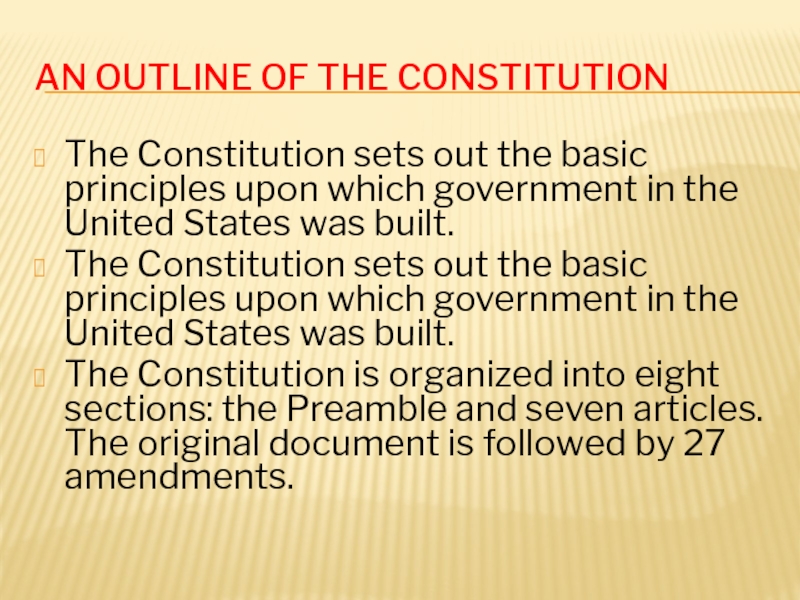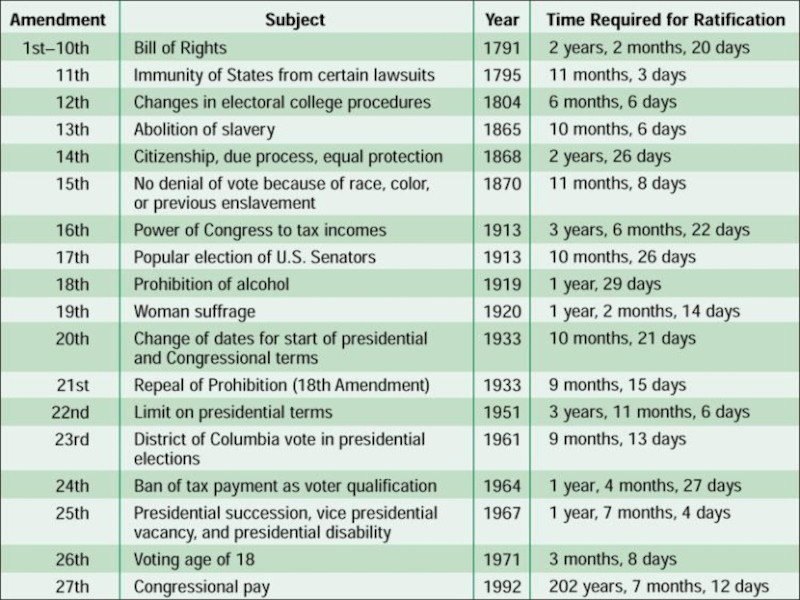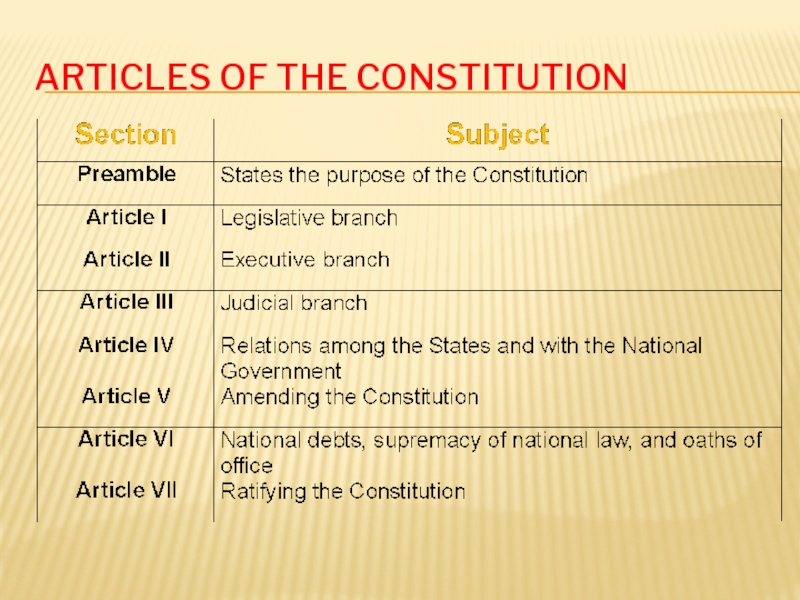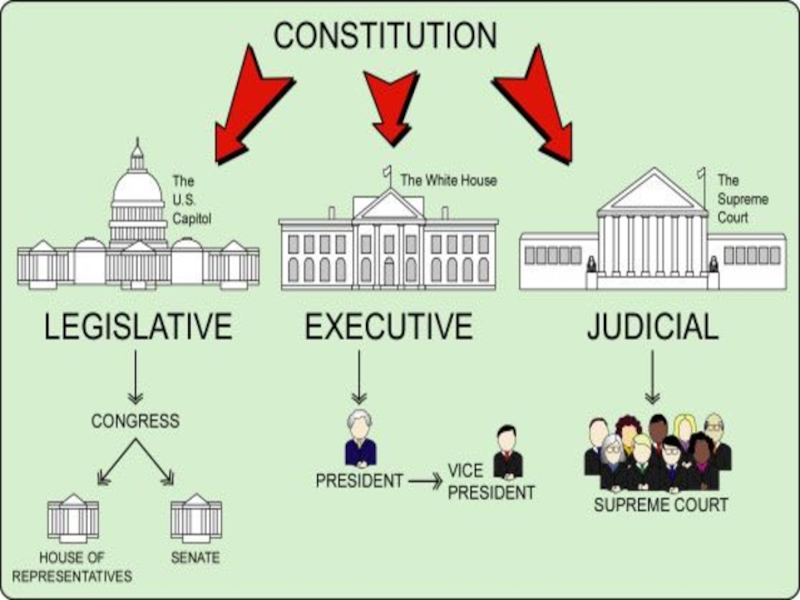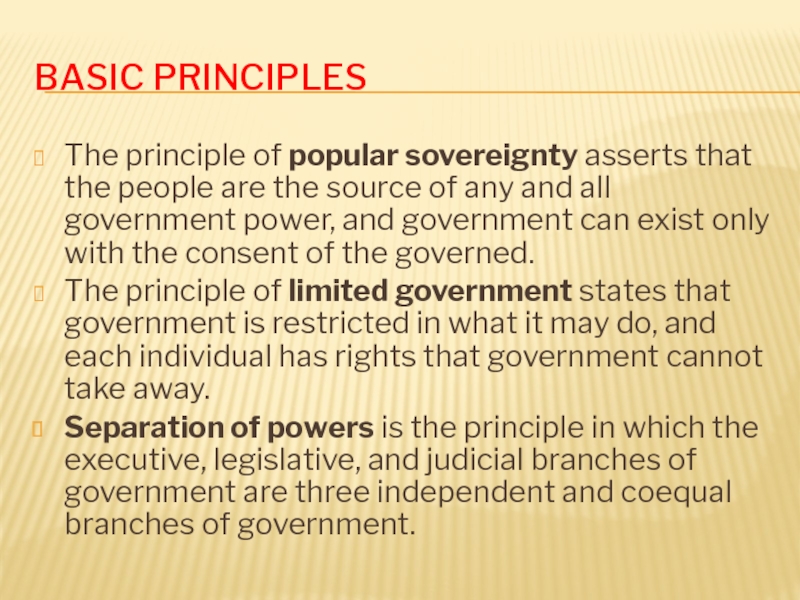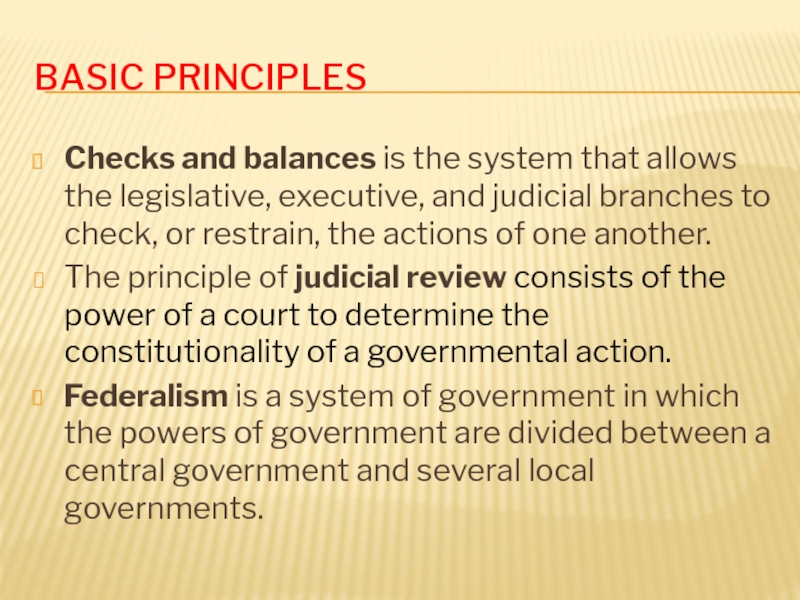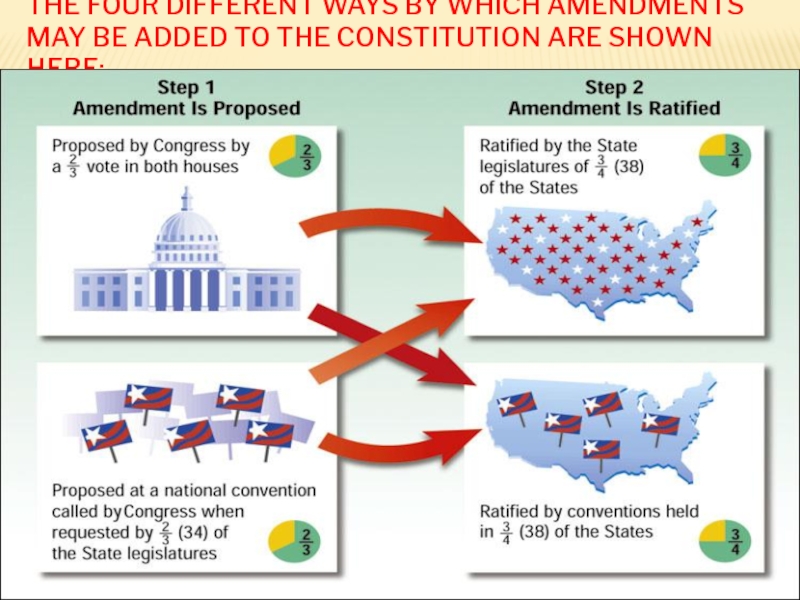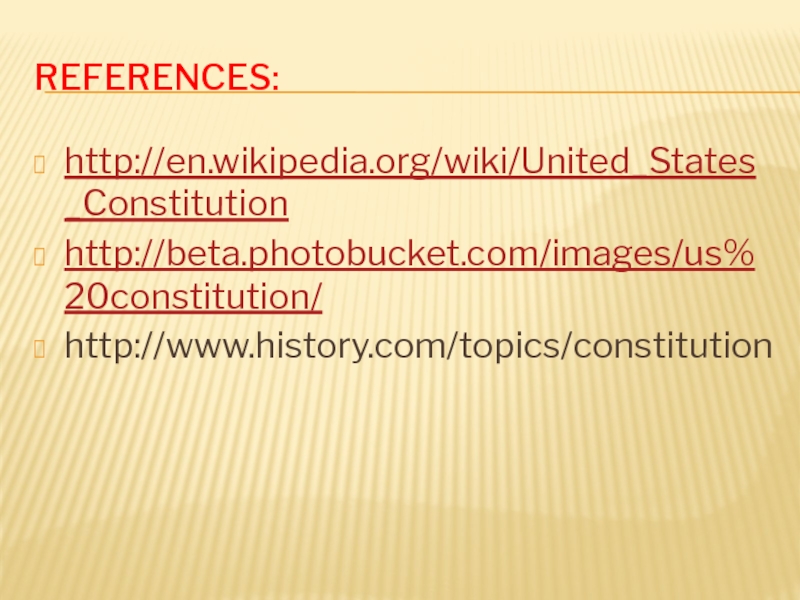State University of World Languages
Self-study work on Country Study
- Главная
- Разное
- Дизайн
- Бизнес и предпринимательство
- Аналитика
- Образование
- Развлечения
- Красота и здоровье
- Финансы
- Государство
- Путешествия
- Спорт
- Недвижимость
- Армия
- Графика
- Культурология
- Еда и кулинария
- Лингвистика
- Английский язык
- Астрономия
- Алгебра
- Биология
- География
- Детские презентации
- Информатика
- История
- Литература
- Маркетинг
- Математика
- Медицина
- Менеджмент
- Музыка
- МХК
- Немецкий язык
- ОБЖ
- Обществознание
- Окружающий мир
- Педагогика
- Русский язык
- Технология
- Физика
- Философия
- Химия
- Шаблоны, картинки для презентаций
- Экология
- Экономика
- Юриспруденция
American constitution. Constitution of the USA and its historical background Done by: 2012 презентация
Содержание
- 1. American constitution. Constitution of the USA and its historical background Done by: 2012
- 2. CONTENTS Introduction to the U.s constitution An
- 3. CONSTITUTION OF THE USA AND ITS HISTORICAL BACKGROUND
- 4. PAGE ONE OF THE ORIGINAL COPY OF THE CONSTITUTION
- 5. INTRODUCTION TO THE U.S CONSTITUTION The Constitution
- 6. JAMES MADISON “THE FATHER” OF THE CONSTITUTION
- 7. GEORGE WASHINGTON AT CONSTITUTIONAL CONVENTION OF 1787, SIGNING OF U.S. CONSTITUTION.
- 8. AN OUTLINE OF THE CONSTITUTION The Constitution
- 10. ARTICLES OF THE CONSTITUTION
- 12. BASIC PRINCIPLES The principle of popular sovereignty
- 13. BASIC PRINCIPLES Checks and balances is the
- 14. THE FOUR DIFFERENT WAYS BY WHICH AMENDMENTS
- 15. REFERENCES: http://en.wikipedia.org/wiki/United_States_Constitution http://beta.photobucket.com/images/us%20constitution/ http://www.history.com/topics/constitution
Слайд 1TOPIC: AMERICAN CONSTITUTION. CONSTITUTION OF THE USA AND ITS HISTORICAL BACKGROUND
DONE BY:
2012
Слайд 2CONTENTS
Introduction to the U.s constitution
An Outline of the Constitution
Articles of the
Constitution
Basic Principles
How amendments may be added to the constitution
References
Basic Principles
How amendments may be added to the constitution
References
Слайд 5INTRODUCTION TO THE U.S CONSTITUTION
The Constitution was adopted on September 17,
1787, by the Constitutional Convention in Philadelphia, ratified June 21, 1788
The first ten constitutional amendments ratified by three-fourths of the states in 1791 are known as the Bill of Rights.
James Madison was “the father” of the Constitution
The first ten constitutional amendments ratified by three-fourths of the states in 1791 are known as the Bill of Rights.
James Madison was “the father” of the Constitution
Слайд 8AN OUTLINE OF THE CONSTITUTION
The Constitution sets out the basic principles
upon which government in the United States was built.
The Constitution sets out the basic principles upon which government in the United States was built.
The Constitution is organized into eight sections: the Preamble and seven articles. The original document is followed by 27 amendments.
The Constitution sets out the basic principles upon which government in the United States was built.
The Constitution is organized into eight sections: the Preamble and seven articles. The original document is followed by 27 amendments.
Слайд 12BASIC PRINCIPLES
The principle of popular sovereignty asserts that the people are
the source of any and all government power, and government can exist only with the consent of the governed.
The principle of limited government states that government is restricted in what it may do, and each individual has rights that government cannot take away.
Separation of powers is the principle in which the executive, legislative, and judicial branches of government are three independent and coequal branches of government.
The principle of limited government states that government is restricted in what it may do, and each individual has rights that government cannot take away.
Separation of powers is the principle in which the executive, legislative, and judicial branches of government are three independent and coequal branches of government.
Слайд 13BASIC PRINCIPLES
Checks and balances is the system that allows the legislative,
executive, and judicial branches to check, or restrain, the actions of one another.
The principle of judicial review consists of the power of a court to determine the constitutionality of a governmental action.
Federalism is a system of government in which the powers of government are divided between a central government and several local governments.
The principle of judicial review consists of the power of a court to determine the constitutionality of a governmental action.
Federalism is a system of government in which the powers of government are divided between a central government and several local governments.
Слайд 14THE FOUR DIFFERENT WAYS BY WHICH AMENDMENTS MAY BE ADDED TO
THE CONSTITUTION ARE SHOWN HERE:
